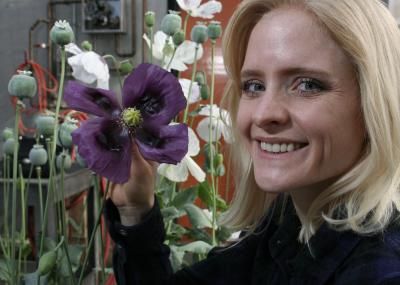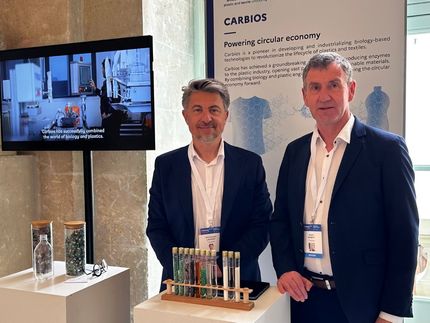Wood's 'noble rot' fungus genetically decoded
An international team including Empa researcher Francis Schwarze has sequenced the genome of the common split gill mushroom, Schizophyllum commune, a widely distributed fungus which grows on and decomposes wood. The genome, containing some 13,000 genes, has recently been published in Nature biotechnology. The new data allows scientists a view of the mushroom's unique enzyme-based digestive apparatus which gives it the ability to attack and degrade wood, causing white rot. It is this ability which Schwarze, together with other colleagues, has exploited to improve the tonal qualities of wood used to make violins.
Fungi are the ideal recycling machines – they decompose dead organic material and convert it into nutritious humus, and together with bacteria they are nature's most important detritivores. During the course of their evolution they have developed special digestive enzymes with which they are able to decompose lignin and other complex substances in woody plants, an ability which is almost unique in nature. However, many species of fungi also attack living wood, thereby causing significant economic damage to wood related industries.
That fungi not only cause damage through their ability to decompose certain constituent materials of wood but can actually improve specific properties of wood has already been shown by Empa's Francis Schwarze. In his «Stradivarius Project» he has used wood-attacking fungi such as the (now genetically decoded) S. commune to improve the tonal qualities of spruce or maple used to make violins. In 2006 Schwarze submitted a patent application covering this process, and last September a biotech violin made with wood treated with fungi was judged superior to a genuine Stradivarius in a blind test.
A real expert at recycling carbohydrates
Schwarze has high hopes for the now completely deciphered genome of "his" fungus. "The genome sequence provides us with essential information on the lignolytic – that is, wood decomposing – enzymes. This knowledge will allow us to genetically modify the wild strain in order to optimize and control very specific decomposition processes." The S. commune genome ought to be a rich source of information, since according to genetic analysis the split gill mushroom possesses the most comprehensive enzyme-based digestive apparatus of all standing fungi (Basidiomycota). The enzymes are used to digest polysaccharides (carbohydrates and long-chain sugars) and to decompose lignin in wood, an ability which is unique, as far as is currently known. According to Schwarze this wide range of enzymatic activity explains why S. commune is so widespread; the fungus can nourish itself on practically anything!
This relatively new field, which Schwarze calls «Fungal Biotechnology», provides a means of improving the process of impregnating spruce and pine wood – neither of which are particularly long-lasting or hard-wearing – with protective and finishing agents. Schwarze is convinced that "…this represents an enormous commercial potential, above all in Switzerland, where more than 60% of the forests are spruce and pine." Another possible application is improving the efficiency of methods for the production of biogenic fuels based on woody biomass.
In addition, the genetic sequence is expected to supply important information on the development of the fruiting body of the fungus and how this process can be optimized, for example in the cultivation of edible mushrooms. Considering that some 2.5 million tonnes of edible fungi are produced every year, this could well prove to be very profitable know-how.
Original publication: Robin A. Ohm et al.; «Genome Sequence of the model mushroom Schizophyllum commune»; Nature Biotechnology, published online on 11th July 2010
Most read news
Other news from the department science

Get the life science industry in your inbox
By submitting this form you agree that LUMITOS AG will send you the newsletter(s) selected above by email. Your data will not be passed on to third parties. Your data will be stored and processed in accordance with our data protection regulations. LUMITOS may contact you by email for the purpose of advertising or market and opinion surveys. You can revoke your consent at any time without giving reasons to LUMITOS AG, Ernst-Augustin-Str. 2, 12489 Berlin, Germany or by e-mail at revoke@lumitos.com with effect for the future. In addition, each email contains a link to unsubscribe from the corresponding newsletter.




















































